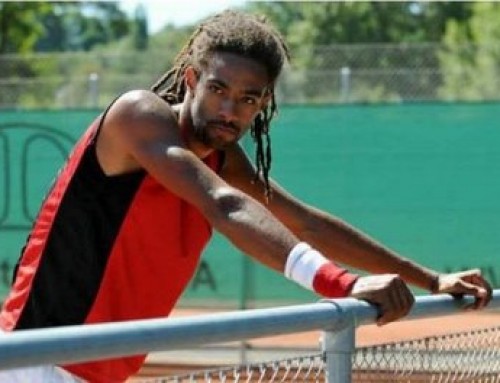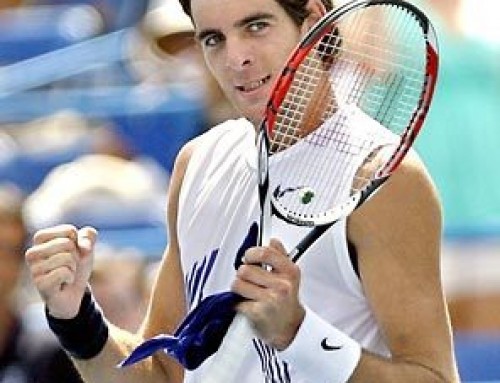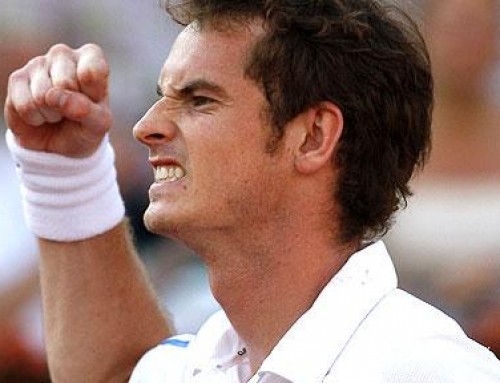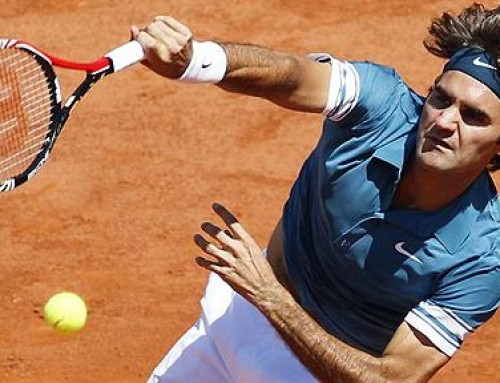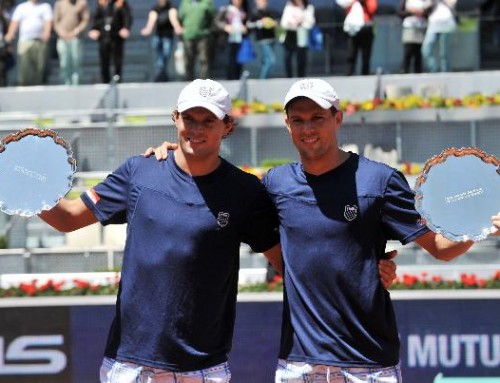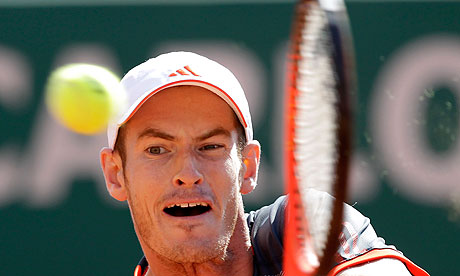 If you were paying attention to tennis around late January, just after the Australian Open, you would have thought Andy Murray was making strides. He had just hired Ivan Lendl. He had managed to fight in a fifth set where he was down a break to tie 5-all, before yielding one more break to Djokovic, showing he could hang in with the best player in the world. People were routinely talking about the “big four”.
If you were paying attention to tennis around late January, just after the Australian Open, you would have thought Andy Murray was making strides. He had just hired Ivan Lendl. He had managed to fight in a fifth set where he was down a break to tie 5-all, before yielding one more break to Djokovic, showing he could hang in with the best player in the world. People were routinely talking about the “big four”.
But as the French Open has rolled on, the big four has now become the big three. The reason? Andy Murray’s performance since the Australian Open.
He started off well in Dubai, reached the finals against Roger Federer. Murray had to feel that beating Federer would show that he still was good enough to beat the best. Instead, Federer was on a roll and played a great few months with his victory over Murray being his biggest highlight. Federer’s winning streak had the benefit of avoiding Rafa and Djokovic. Any time he met either one, he lost.
Murray then went into his usual Indian Wells slump and lost immediately to Guillermo Garcia-Lopez. And this was a thumping. Murray has weird losses like this where he just loses to no one in particular. Rafa, for example, is generally good for a few rounds and almost never loses in the opening round. Neither does Federer or Djokovic. Not to say it hasn’t happened to either one, but it’s rare.
Murray did bounce back to reach the finals of Miami which is much better than how he’s performed the last two years where he lost early in Indian Wells and Miami (two years ago, he did reach the quarters of Indian Wells losing to Robin Soderling, so that was a reasonable loss). However, he lost to his rival, Novak Djokovic once again. And he managed to avoid two players that might have given him trouble: Milos Raonic and Rafa both withdrew from matches that allowed Murray to make the finals.
Last year, Murray appeared to have a breakthrough on clay. He reached the semifinals of Monte Carlo and took a set off of Rafael Nadal. He reached the semis of Rome and nearly beat Novak Djokovic. He nearly had an ankle injury knock him out of the French Open, but recovered to reach the semifinals.
This year, he didn’t reach the semis of any of the clay events. Murray has been struggling with a bit of an injury and may have decided not to aggravate it this close to the French Open and Wimbledon, but from the outside, it looks like he’s slipping. The players he’s lost to have similar styles. Both Berdych and Raonic hit big off the ground. Murray seemed unable to bang with the big boys partly because his preference is to rally a bit and look for openings. Even though he’s somewhat similar in height to Berdych and Raonic, Murray has never favored learning the big hitting style. His usual rally style is also not troubling in the way, say, Djokovic or Nadal is troubling to their opponents.
Murray, for instance, doesn’t play like Ferrer, who likes to pound at someone’s backhand and open up the court when the opportunity presents itself. Murray doesn’t believe in pressuring his opponents unless it’s the rare occasion where he does. Murray has played aggressive tennis. Most notably, he had a great tournament in Toronto a few years ago where he beat a hot Nalbandian, Nadal, and Federer in back-to-back-to-back tough matches.
Or more recently, in Tokyo, Murray thumped Nadal with raw power. But Murray rarely does this. He won’t beat a player like Tatsuma Ito (his first round opponent) by overpowering them. If his aggression goes a bit off, Murray then has to rely more on defense. Murray used to be able to vary the spins on his shot, hit drop shots, and befuddle his opponents, but he’s been on the tour so long, most people know how to handle it. This may be one reason, for example, that Bernard Tomic is struggling again. You may have a gimmicky way to play, but once people have a good strategy to play you, then you’re in trouble. Tomic has to build a good power game to complement his touch game. He has to also build foot speed, since he’s a bit slow. Murray once pointed out that Tomic tends to guess on serves and lean one way even before the serve is hit.
I’m sure Ivan Lendl has told Murray that all that matters is the Slams though certainly Lendl cared enough to keep his rankings up. Although Murray has played rather indifferently, he still has his last 4 Slam results, which has given him a big cushion over number 5, Jo-Wilfried Tsonga. However, he has a bunch of points to defend, so he better hope that he’s been hiding a bigger game and waiting to unleash it.
The likelihood isn’t all that high. Players make some leaps in their games, but it’s rare to see that. In the old days, when players didn’t have modern training practices, being able to play in the winter indoors, as Bill Tilden once did, allowed a player to bring a new wrinkle to his game. For Tilden, it was an improved backhand.
This isn’t to say Murray’s done nothing to his game. Murray’s improvement has come with a bigger first serve, but it comes at a cost. Murray doesn’t hit a high percentage in and this means he must play a lot of points to win. But without the kind of ground game that Nadal has, Murray has to work a bit harder to win. Murray has improved the power on his forehand and he used it to beat players like Nadal and Federer. However, it’s not something he relies on, especially against lesser players. He’s always had good foot speed, though he seems a touch slow this year struggling to get to drop shots.
Murray would do himself a big favor if he learns to hit the down-the-line shot reliably, both on forehand and backhand. He is supremely confident hitting crosscourt, but it makes his game a bit predictable without the threat of going down the line. Interestingly enough, down the line was Lendl’s favorite shot, but these shots are generally built from confidence rather than mechanics. If he can add this one, albeing
The sense is that Lendl isn’t tinkering a ton with Murray’s preparation and that Murray is still managing a great deal of his own training.



